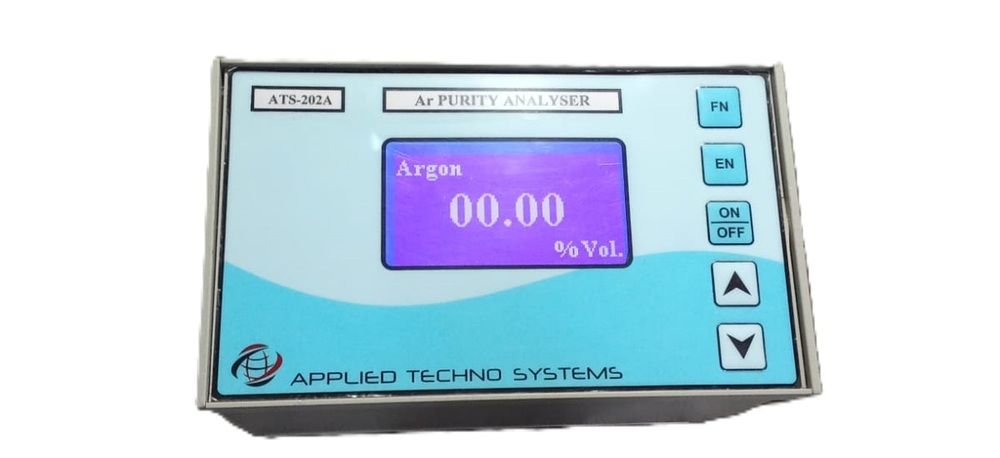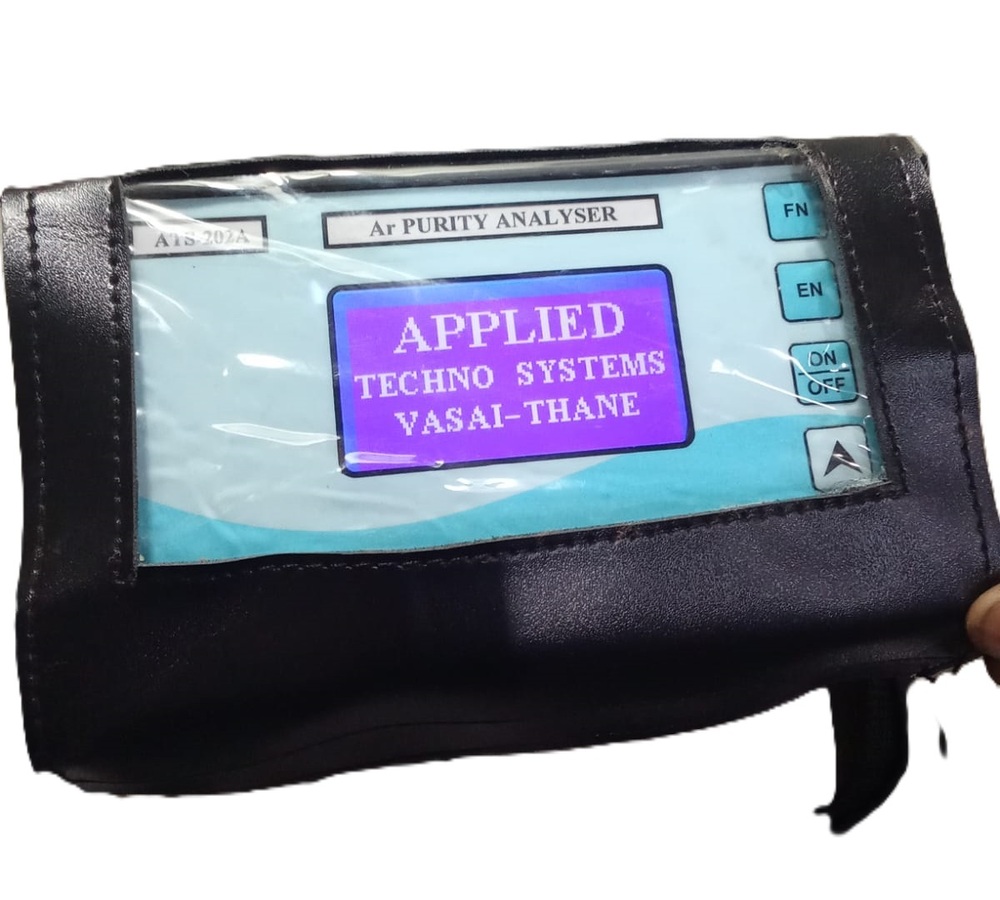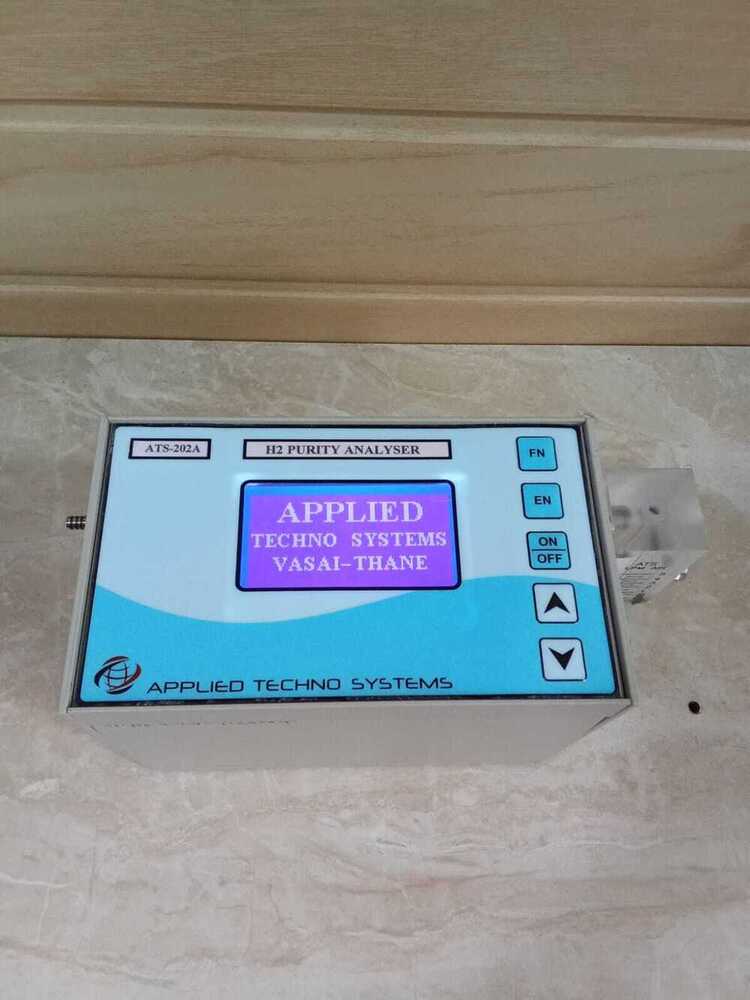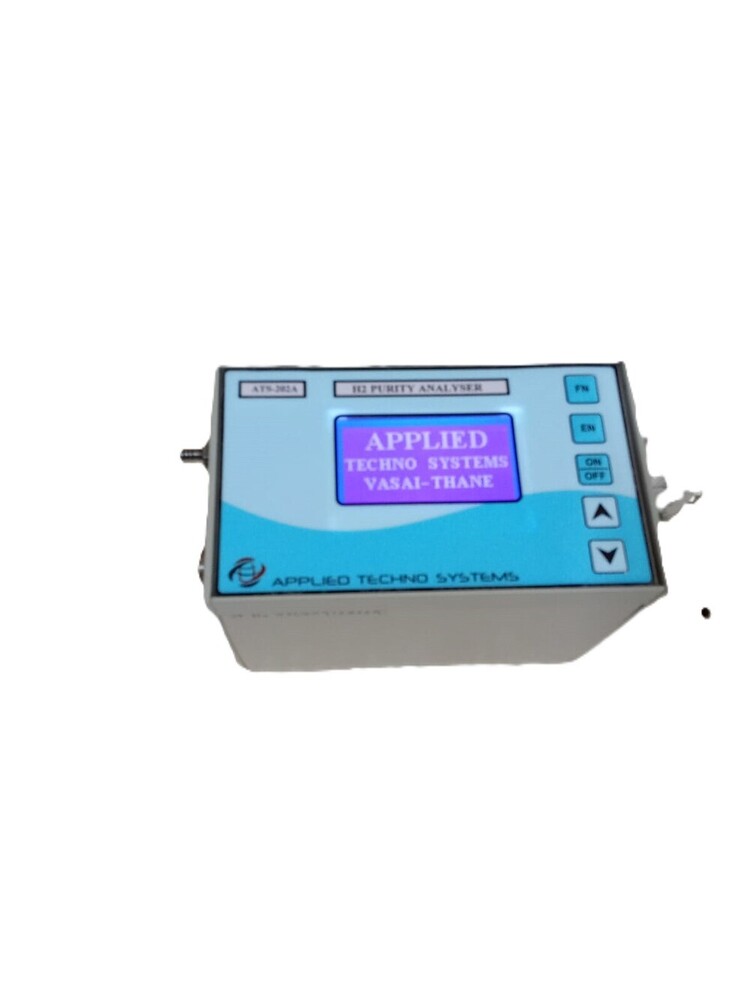- Dew Point Meters
- Gas Analysers
- Portable Gas Detector
- Moisture And Dew Point Analyzer
- Dust/Opacity Monitor
- Gas Monitoring Systems
- Gas Leak Detectors
- Gas Transmitters
- VOC Leak Detector
- Air Quality Monitoring System
- Online Continuous Emission Monitoring System-OCEMS
- Dew Point Monitors
- Gas Detector
- Opacity Monitor
- Portable Flue Gas Analyzer
- Online SOX & NOX Gas Analyzer
- Methane Gas Leak Detector
- Hydrogen Purity Analyzer
- Gas Purity Analyzer
- Effluent Monitoring Systems
- Producer Gas Analyzer
- Gas Detector Calibration Service
- Portable Gas Monitors
- Gas Sensor Transmitter
Argon Gas Purity Analyzer Model ATS 202A
Price 175000 INR/ Unit
MOQ : 1 Unit
Argon Gas Purity Analyzer Model ATS 202A Specification
- Mounting Type
- Handheld or tripod
- Operate Method
- Semi Automatic
- Automation Grade
- Semi-automatic
- Material
- MS
- Features
- Good Quality
- Usage
- Industrial
- Voltage
- 110-215 Volt (v)
- Control Mode
- Manual
Argon Gas Purity Analyzer Model ATS 202A Trade Information
- Minimum Order Quantity
- 1 Unit
- Supply Ability
- 500 Units Per Month
- Delivery Time
- 7 Days
About Argon Gas Purity Analyzer Model ATS 202A
Argon Purity Analyzer: Description An Argon Purity Analyzer is a precision instrument used to measure the purity level of argon gas in industrial, medical, or research applications. Argon is a noble gas commonly used in welding, electronics manufacturing, lighting, and inert gas shielding processes, where maintaining high purity is critical for quality and performance. Key Features High Sensitivity Sensors: Detect trace impurities such as oxygen, nitrogen, hydrogen, or moisture, which can affect argon's performance. Real-Time Monitoring: Provides continuous measurements to ensure consistent argon purity in dynamic environments. Wide Detection Range: Typically capable of measuring purities from 90% to 99.999% (5N) or higher. User-Friendly Interface: Touchscreen displays, data logging, and integration with SCADA systems for easy operation and monitoring. Compact and Portable Design: Some analyzers are handheld or portable, making them suitable for field applications. Advanced Calibration Systems: Equipped with automatic or manual calibration functions to ensure accuracy and reliability over time. Applications Welding and Fabrication: Ensures pure argon shielding in TIG/MIG welding processes to prevent weld contamination. Semiconductor Manufacturing: Monitors ultra-high-purity argon used in chip production. Lighting Industry: Verifies argon gas purity in gas-discharge lamps and neon lighting. Metallurgy: Guarantees purity in processes like argon-oxygen decarburization (AOD) for stainless steel production. Medical and Laboratory Uses: Maintains the required standards for inert environments in medical research or analytical chemistry. Technical Specifications Measurement Range:0 to 100% purity (specific ranges depend on the model).Detection Methods: Thermal Conductivity Detector (TCD)Gas Chromatography (GC)Mass Spectrometry (MS)Electrochemical Sensors Response Time: Instantaneous or within seconds for real-time analysis. Operating Temperature: Typically ranges from -10C to +50C.Accuracy:0.1% or better, depending on the model. Output Options: Analog (4-20 mA), digital (RS-485, Modbus), or wireless communication. Maintenance Regular calibration using certified gas standards. Sensor replacement based on the manufacturer's recommendations. Cleaning and inspection to avoid contamination or interference. Let me know if you need a more detailed specification or recommendations for specific modelsVersatile Operation for Industrial Demands
The ATS 202A Argon Gas Purity Analyzer seamlessly adapts to diverse industrial environments. With a broad voltage range and the option for handheld or tripod mounting, it offers flexibility in field and laboratory settings. Designed for semi-automatic and manual control, users gain direct oversight while benefiting from simplified workflows.
Quality Construction for Reliable Performance
Engineered with durable MS (mild steel) and featuring robust build quality, the ATS 202A ensures accurate gas purity readings even under continuous industrial use. This construction supports lasting dependability, making the device a suitable investment for facilities seeking consistent analysis and minimal downtime.
FAQs of Argon Gas Purity Analyzer Model ATS 202A:
Q: How does the Argon Gas Purity Analyzer Model ATS 202A measure gas purity?
A: The ATS 202A measures argon gas purity using advanced sensors and a semi-automatic process, providing accurate readings through manual control. You receive real-time data that assists in maintaining optimal gas quality for industrial operations.Q: What are the benefits of using a semi-automatic and manual control mode analyzer?
A: Semi-automatic and manual control modes empower operators to directly manage test sequences, ensuring precise measurements while simplifying the operation process. This approach balances automation and oversight for enhanced reliability and user satisfaction.Q: When is it recommended to use the tripod mounting option over handheld use?
A: The tripod mounting option is recommended during extended monitoring sessions or when stable, hands-free operation is needed. This helps reduce user fatigue and ensures consistent, vibration-free readings over long periods.Q: Where can the ATS 202A be used within industrial settings?
A: The Argon Gas Purity Analyzer ATS 202A is ideal for use in industrial gas production, metal fabrication, welding, laboratory testing, and quality control environments where precise argon purity levels are critical.Q: What is the process for operating the ATS 202A analyzer?
A: To operate the ATS 202A, connect the unit to a compatible power source within the 110-215 Volt range, set up either handheld or on a tripod, introduce the gas sample, and follow the semi-automatic protocol using manual inputs as needed to obtain the purity reading.Q: How does having good quality features benefit the user?
A: The good quality features ensure reliable performance and accurate measurements over time. This increases operational safety, improves product quality, and reduces the costs associated with faulty gas supplies or repeated testing cycles.
Tell us about your requirement

Price:
Quantity
Select Unit
- 50
- 100
- 200
- 250
- 500
- 1000+
Additional detail
Mobile number
Email
More Products in Gas Purity Analyzer Category
Nitrogen Purity Analyzer
Price 42500 INR / Set
Minimum Order Quantity : 1 Set
Usage : Industrial
Power Supply : Electric
Features : Complete Automatic Operation
Argon Purity Analyser
Price 175000 INR / Unit
Minimum Order Quantity : 1 Unit
Usage : Purity Analyzer
Power Supply : Rechargeable Battery With Charger
Nitrogen Purity Measurement
Price 85000 INR / Unit
Minimum Order Quantity : 1 Unit
Usage : Industrial
Power Supply : Electric
Material : Aluminium
Features : High Quality
Portable Nitrogen Purity Analyzer
Price 75000 INR / Unit
Minimum Order Quantity : 1 Unit
Usage : Industrial
Power Supply : Electric
Material : MS
Features : Good Quality

 Send Inquiry
Send Inquiry





 English
English Spanish
Spanish French
French German
German Italian
Italian Chinese (Simplified)
Chinese (Simplified) Japanese
Japanese Korean
Korean Arabic
Arabic Portuguese
Portuguese